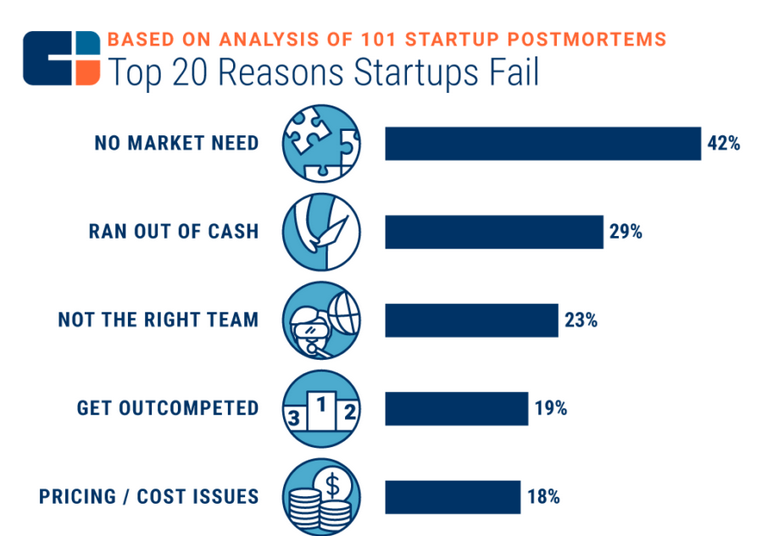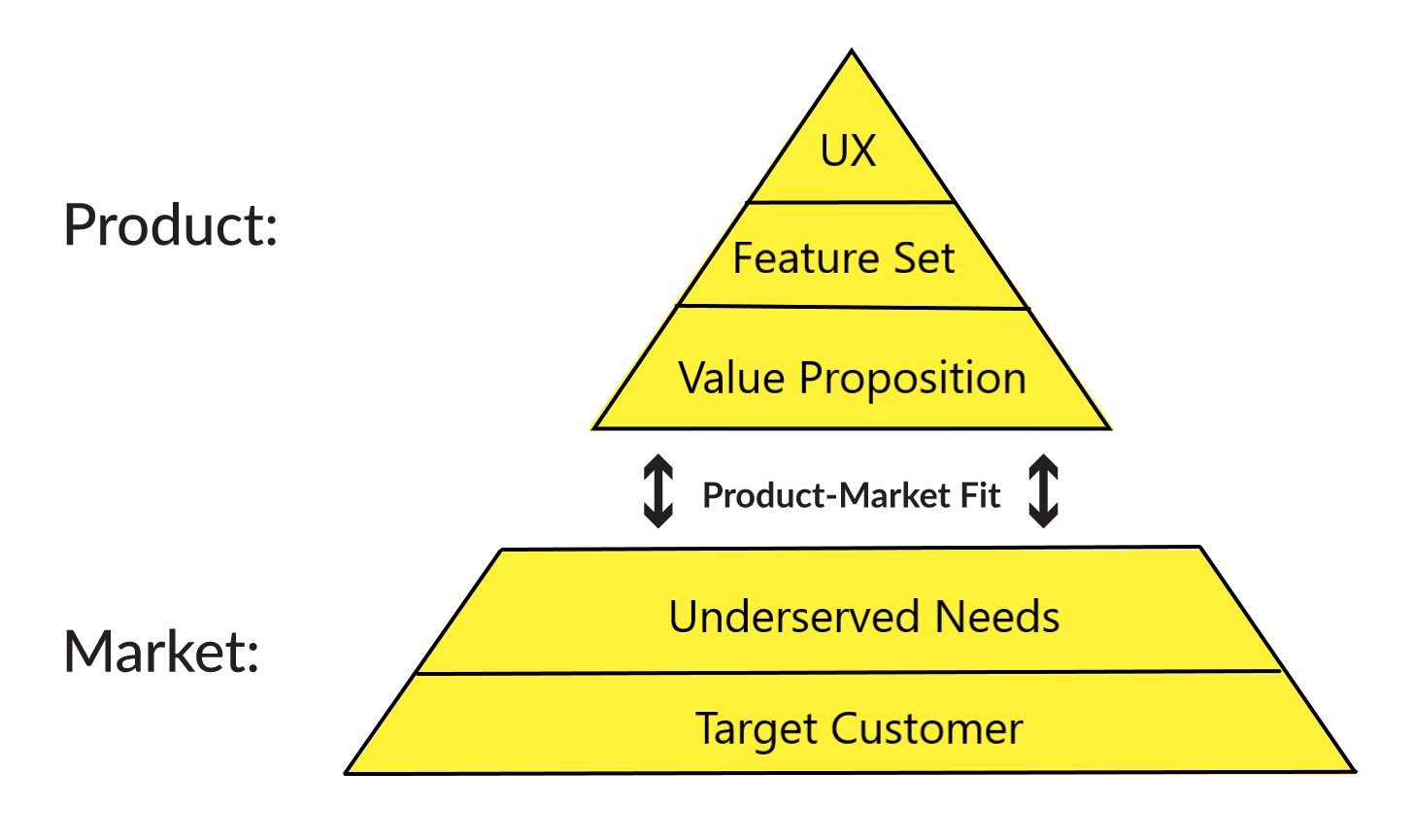What’s common between Kodak and Micromax? They were both business leaders once – Kodak in the global film camera market, and Micromax in the Indian smartphone market. But then something changed and both the companies lost favor with the customers.
What changed was not the product the companies were selling. What changed was the needs of the customers. Where what the two companies were once selling matched with what their customers needed, there came a time when the market no longer wanted the product the companies were selling, and the companies failed to offer a product the market wanted. In the case of Kodak, it was the shift in consumer taste in favor of the digital cameras. In the case of Micromax, it was a change in consumer demand from 3G- to 4G-enabled devices.
Kodak and Micromax were established companies. What happened to them is hardly relevant for startups, right? Actually, having no market need, like in the case of these two erstwhile market leaders in their respective fields, is the number one reason why startups fail. When the product you want to sell aligns with the needs of the customers you want to sell the product to, you have what is called Product-Market Fit. In other words, market, and not your great startup idea, is the boss. Startups that begin with this wisdom, or have this realization early on in their journey, go on to find success.

Meaning of Product-Market Fit
Despite its implications for the startups as well as the traditional businesses, the concept of Product-Market Fit is hardly used in the larger business world and not too well understood in the startup world. It is only right to ask what the meaning of Product-Market Fit really is. But before going deeper into that, it would be instructive to look at some definitions of Product-Market Fit from industry practitioners.
Definitions of Product-Market Fit
The liberal use of the term in the startup circles, notwithstanding, there are no standard definitions of Product-Market Fit. Here are some of the ways it has been defined over the years.
- Andy Rachleff, Coiner of the term Product-Market Fit: Identifying a compelling value hypothesis is what I call finding product/market fit. A value hypothesis identifies the features you need to build, the audience that’s likely to care, and the business model required to entice a customer to buy your product.
- Marc Andreessen, Co-founder of Andreessen Horowitz: Product-Market Fit is being in a good market with a product that can satisfy that market.
- Michael Seibel, CEO of Y Combinator Core: My definition of product-market fit is: You are drowning in demand—your product is being used by so many customers that you cannot handle all the new people knocking at your door!
- Joshua Porter, Former Director of UX at HubSpot: When they (people) begin to share their positive experience with others, when you can replicate the experience with every new user who your existing users tell, then you have product-market fit on your hands. And when this occurs something magical happens. All of a sudden, your customers become your salespeople.
- Nikhyl Singhal, Co-founder of SayNow: Here’s my simple definition of product/market fit: The value of each user is greater than the cost of bringing them into the product. It means there are enough customers out there and you can efficiently bring them in.
If these definitions left you scratching your head, it is because there are great many ways in which Product-Market Fit can be described. That is to say that there are many other ways people describe it, depending upon which aspect of it they look at.
Going Back to the Meaning of Product-Market Fit
At its core, the meaning of Product-Market Fit is as simple as having a product that people really want. Taking the concept further, you see that there are three parts to it: size of the market, market need, willingness to pay. Let’s take a closer look at these.
- In terms of size of the market, Product-Market Fit is about having a product that solves a problem for a large number of people. For any business idea, finding a few customers here and there is totally within the realm of possibility. The real deal is to have a market large enough to sustain you in the short run and allow for your growth in the long run.
- Going by market need, Product-Market Fit means that the product addresses an issue that causes pain for the customers or creates gains that customers care about. The real test of a product is not in how good of an idea it is based on but if it makes life better for the target customers. Startups that create products that fulfill a market need have the staying power; others fizzle out.
- The willingness-to-pay part of Product-Market Fit relates to having enough customers who are willing to pay for your product. If you can get your target customers to show their interest in paying for your product even before you have a product, it is a sign that you will achieve Product-Market Fit. Customers will pay if the problem your product solves is not a minor inconvenience but a major pain point that affects their life considerably.
Product-Market Fit happens when a startup emphatically checks the box for all the above three criteria. It is crucial to know that achieving Product-Market Fit does not happen overnight. It’s a slow process that takes several months.
It is generally believed that a startup should find product-market fit in less than two years. If it takes longer than that, you either have the wrong product or you are in the wrong market, in which case you need to change your product to align with the needs of the market, or, you need to find another market that your product could serve.
Product-Market Fit Pyramid
This visual representation of how to achieve Product-Market Fit was given by Dan Olsen in his book, The Lean Product Playbook. The pyramid has a product component and a market component. The assumptions and decisions you make in the top three levels of the pyramid (the product part) should resonate with the bottom levels (the market part). When this happens, a startup achieves Product-Market Fit.

Product-Market Fit Examples
We started this post with two examples of Product-Market Fit failures. They were a case of established players failing to take note of the changing dynamics of the market they were serving. In the case of startups, a large number of them become preoccupied with the product or the solution they are developing, not doing enough research on the very market they intend to serve. The result is products that no one wants with features no one asked for. However, in the overflowing stream of startups, come a few every now and then that get the fit just right and go on to become household names.
Here are five Product-Market Fit examples of great success to take inspiration from:
- Just one year after launching, Uber started to get one new rider for every 7 rides – without spending a single dollar on marketing.
- Instagram had 25,000 signups on its first day.
- Slack grew from 15,000 daily active users from its launch in February 2014 to 1.1 million in June 2015 to 4 million in October 2016. Founder Stewart Butterfield used to handle most of the Twitter comments in the early days. The company continues to provide users with multiple ways to communicate with the Slack team.
- Netflix started as the world’s first online DVD-rental store and has evolved to become an online streaming service, an over-the-top content platform, and a production company. Netflix changes its product whenever the market need changes, making sure that it maintains its fit.
- First-time installations of Zoom’s mobile app have skyrocketed 728% since March 2, 2020. According to Nick Chong, Zoom’s Head of Global Services, “We spend much of our time listening to customers and fine-tuning our software to fit their needs.”
If the concept of Product-Market Fit seems to elude first time founders, it’s not too benevolent with seasoned players either. Here are two Product-Market Fit examples of failures faced by giants who continue to dominate their respective industries otherwise.
- Amazon Fire Phone – Amazon launched the Fire Phone in 2014 that fell so short of customer expectations that the company lost an estimated $170 million and hasn’t tried building another phone since.
- Microsoft Zune – Microsoft launched Zune in 2006 to compete with Apple’s iPod. Zune was such a spectacular failure that it couldn’t even get a two-digit market share of the global music player sales. Robbie Bach, former lead of Microsoft’s home entertainment business said, “We just weren’t brave enough, honestly, and we ended up chasing Apple with a product that actually wasn’t a bad product, but… there wasn’t a reason for somebody to say, oh, I have to go out and get that thing.”
Finding Product-Market Fit is indispensable for startups to stay in business. It takes time to achieve it, and it is more a journey than a destination. The quest for Product-Market Fit doesn’t really stop even after you have achieved it. Markets evolve. Competitors can take you by surprise. You need to keep adapting to keep pace with the changes – foreseen or otherwise.
Achieving Product-Market Fit is not an event that takes place at a designated time and place. It is something you need to track to know when it happens, if at all. But it is nothing to be intimidated of. Keeping your eyes and ears open to the signals from the market you intend to serve and responding to the feedback goes a long way.
Hello! I simply would like to give a huge thumbs up for the good information you’ve right here on this post. I can be coming again to your weblog for more soon.